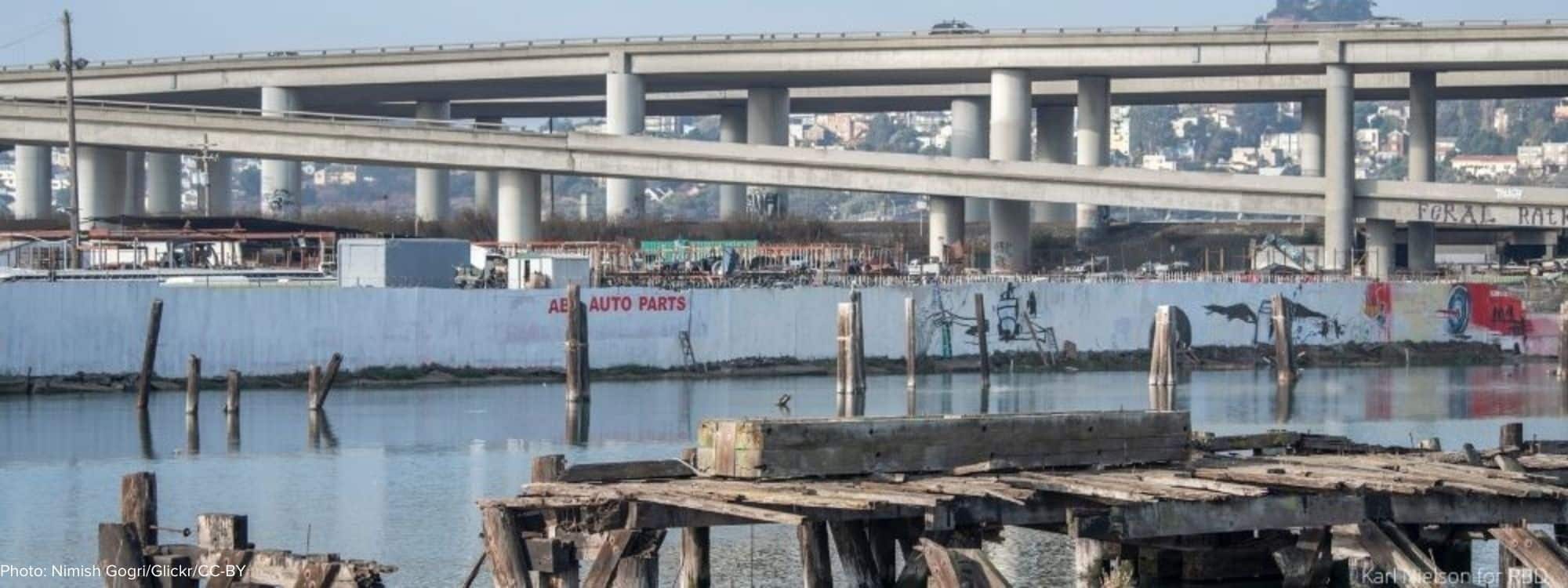Investments in infrastructure have in some ways provided the backbone of economic growth and prosperity for our nation, and in other ways accelerated dangerous and unhealthy growth patterns—causing significant environmental damage and fraying our social fabric. Investments in highways in the last century have created our car-dependent culture, exacerbating isolation and loneliness, as well as extreme levels of planet-warming greenhouse gas emissions. At the same time, the reduction in infrastructure investment overall in the last generation has left those same roads, highways, and bridges that we depend on in dangerous disrepair. This disinvestment is most evident in low-income and communities of color that are most likely to experience the negative effects of outdated and under-maintained infrastructure.
This is accelerated and exacerbated by the increasing effects of climate change that we are already experiencing. Increased flooding overwhelms seawalls and destroys homes. Parched soil due to drought crumbles roads and bridges and dries up supplies of fresh clean drinking water. Wildfires are started through faulty and decaying power lines and move more rapidly and dangerously than ever due to climate change.
Momentum For Change
It is with this backdrop that the Biden Administration and Congress have been negotiating an infrastructure bill over the last six months. In an Op-Ed in the Mercury News in May, we called on the administration to invest more in nature-based resilience and to ensure all infrastructure is being built to the highest standards to withstand the increased hazards we are facing.
We’re pleased to see that the bipartisan bill “Infrastructure Investment and Jobs Act“, signed into law by President Joe Biden on Monday, November 15, makes the largest investment ever in natural systems to build climate resilience. “The law also builds on our resilience so that our next superstorm, drought, wildfire, hurricanes can be dealt with. Last year, as a consequence of these extreme weather events, lost $99 billion in damage in the USA alone,” acknowledged the President during the signing ceremony.
Some highlights include
- $11.6 billion to the Army Corps of Engineers for projects related to flood control
- $3.5 billion to FEMA for flood mitigation and assistance.
- $140 million for the National Oceanic and Atmospheric Administration for forecasting climate change and roughly half a billion additional dollars to better map and forecast inland and coastal flooding, specifically.
- More than $100 million will go to the Bureau of Indian Affairs for relocating Indigenous communities away from climate risks like sea-level rise.
Aging power grids will get upgrades, increasing energy efficiency, and reducing wildfire risk. Water infrastructure will be upgraded to ensure more access to clean drinking water, and public transit will get repairs, upgrades, and modernization. Overall, the bill represents a great step forward in investing in the repairs and investments we need for a more resilient future.
Build Back Better
That said, this bill is only a downpayment to addressing the backlog of infrastructure needs we have as a nation. Amid the historic $1.2 trillion investment, the White House acknowledges that extreme weather incidents cost this country over $100 billion just last year. We applaud this action as an important first step! And we won’t pause in our efforts to continue to secure both the funding and the transformational commitments, starting with demanding that Congress immediately turns to the task of passing the Build Back Better bill—helping nature help us and building the next generation of physical and social infrastructure to truly serve as the scaffolding of a better future.




